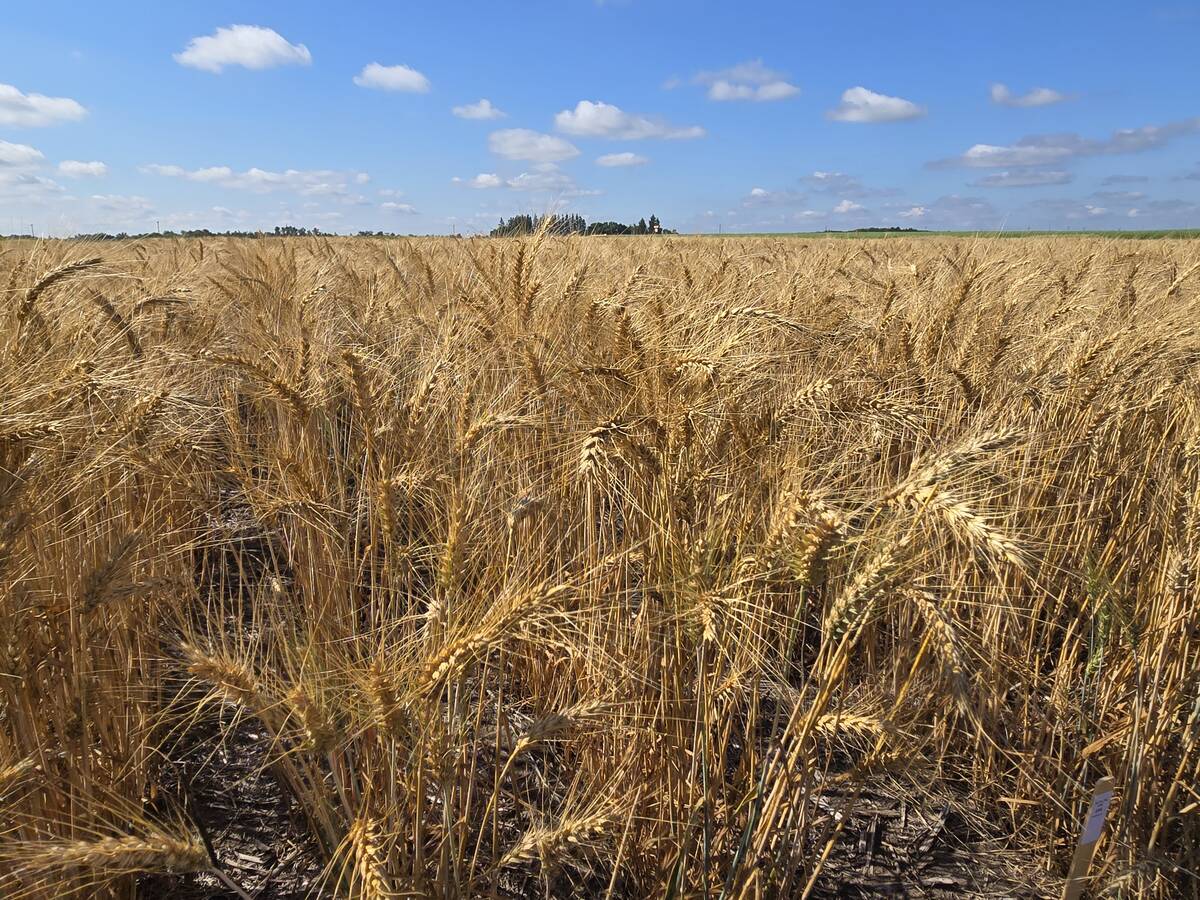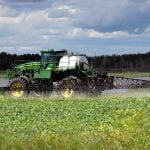Martin Entz knew he was saying something controversial.
But he said it anyway.
“We have vilified tillage, in the Prairies, for years. (But) if you have to choose between tillage and growing plants, you would choose a good crop rotation before no-till, anytime; and the data supports that,” said Entz, University of Manitoba plant science professor and organic cropping systems specialist, who spoke at the 2020 Prairie Organics conference held in early March in Brandon.
Entz added some farmers may believe that tillage destroys soil, but the perception is incorrect.
Read Also

Fall rye hits record high in Manitoba
Winter cereals 2025: More Manitoba fields grew fall rye in 2025 than ever before, but winter wheat slipped and, while spring stand survival was good, drought took its toll
“It doesn’t,” he said. “Minimizing tillage is good for soils. But eliminating tillage is not necessary for a healthy soil. We can talk about that in the hallways.”
For decades, proponents of zero tillage have said that conventional, no-till farmers have healthier soils than organic farmers who till the land. The argument is based on the notion that tillage destroys soil particle aggregates and hinders biological activity.
Basically, no-till soils have better structure, have better nutrient cycling and superior content of organic matter.
It’s not just farmers who believe no till is essential for soil health. Research from Pennsylvania, for instance, shows that soil aggregates (a measure of soil health) are more prevalent in no-till systems.
“Soil aggregate stability in the soil surface of continuous no-till was 100 percent greater than in moldboard plow, 61 percent greater than in chisel/disc, and 25 percent greater than in short-term no-till,” says a United States Department of Agriculture Natural Resources Conservation Service website.
Following his presentation, Entz clarified that he supports no-till practices. However, a diverse rotation of crops makes a greater contribution to healthy and productive soils than zero tillage.
“That’s the data. This is not an opinion. This is a fact,” he said. “I’m not (against) no-till. At all.”
But when I look at the data, I see that building up soil quality, which means things like carbon and the soil biology, there’s more ways of achieving it than just using no-till.”
Put another way, growers who seed a diverse rotation of crops, including perennials and cover crops, might have healthier soil than farmers who have practiced no till for decades.
Entz pointed to data from the University of Guelph, where scientists have been studying no-till and crop rotations since the early 1980s.
Since many Ontario farmers grow nothing but corn and soybeans, University of Guelph researchers wanted to know if zero tillage could resolve some of the soil health problems associated with a simple crop rotation, said Bill Deen, a University of Guelph plant scientist.
The Guelph scientists found that soil organic carbon in the soil profile is the same in no-till and conventionally tilled systems. Even in soil that has been zero tillage for decades.
“Martin is correct…. If you move towards a reduced till, no-till system it doesn’t impact total soil organic carbon in a (soil) profile. There’s lots a data to support that,” he said. “(The) data may be transferable to Western Canada, as well.”
However, the results depend on the depth of soil.
The top layer of soil in a no-till system has more carbon and superior soil properties to tilled land.
“When you talk about tillage impacting soil health, you have to qualify that. What depth are you talking about?” Deen said. “When we look at a number of different attributes, I would argue that soil health at the surface of a no-till soil, is probably better than soil health of a conventionally tilled soil at the surface.”
But tilled land has more soil organic carbon at depth, Deen explained.
“Total carbon isn’t changing in the two systems. In no-till there’s more at the surface. But… in conventional till, you’ve got more at depth.”
Deen defined the surface of the soil as being about the top 10 centimetres.
He doesn’t know why there’s more soil organic carbon at depth in tilled soils. It’s possible that tilling mixes organic matter into the soil, or plant roots can penetrate further into tilled soil.
Despite better soil health and more organic carbon at the surface, many Ontario growers have abandoned zero-tillage.
They have found that tillage is needed in a corn-soybean rotation.
“We know from all the data that a simple system… is more responsive to tillage,” Deen said.
“Even though that soil health at the surface seems better, it (no till) wasn’t performing… Over the last six-seven years, we’ve seen a significant reduction in no-till.”
A soybean specialist described the situation in Ontario with a catchphrase.
“North of Highway 8, no-till is no more,” Deen said.
Highway 8 runs through the middle of southwestern Ontario.
Zero tillage may be detrimental to corn and soybean yields, because no-till soils are cooler in the spring and plant emergence is delayed.
“We had one year… it was a cold, wet spring and no-till just took it on the chin,” Deen said.
In an ideal world, growers would implement a diverse crop rotation, no till and keep the soil covered as much as possible. That trifecta is the best for soil health and performance, Deen said.
Of the trifecta, diversity of plants seems to be critical. Ontario growers who add winter wheat to their soybean-corn rotation can dramatically improve their soils.
“If I had to pick one of those three as being the most important factor for a farmer to choose, it would no doubt in my mind, certainly in an Ontario context, would be diversified rotation.”
Nonetheless, he believes organic growers should look at reducing tillage, because there are definite benefits.
Entz has a similar philosophy, but tillage is an essential part of organic farming.
“We’re not going to eliminate tillage in organic. We had a study in Carman (Man.) where we looked at how much we could push no-till in organic. We got to (every) five years and it just collapsed,” he said, adding the land should be covered with plants as much as possible.
“I always tell farmers, when you till a field… the next day you (should be) out there with a planter…. To leave soils fallow and tilled, is a big problem.”
What about soil erosion?
University of Guelph research suggests that soil organic carbon is the same in tilled soils and no-till soils. Plus, there’s a yield drag on corn and soybeans grown in no-till soils, so many Ontario growers have moved away from zero tillage.
But what about the most important benefit of zero tillage — reducing soil erosion?
David Lobb, a University of Manitoba soil scientist, has determined that soil erosion is costing Canadian farmers billions in lost productivity.
He believes 10 percent of Canada’s cropland has moderately to severely eroded soil. Much of the eroded soil is on the tops of knolls, where tillage, wind and water erosion has stripped it away.
The poorer yields on that land is costing Canadian farmers about $3.1 billion each year in lost productivity, Lobb said in 2019.
South of the border, some North Dakota State University scientists are also convinced that erosion is costing farmers billions. Over the last 80 years, tillage and other forms of erosion may have removed about 15 centimetres of topsoil from 20 million acres of cropland in the state.
“I think that’s conservative,” said Dave Franzen, an NDSU soil fertility specialist, in January 2017.
That 15 cm of lost topsoil contained a massive amount of nutrients, he added.
“We would have lost an additional 12.5 million tons of phosphate and 40 million tons of nitrogen. That is the equivalent of 75 years of N and P application at present rates.”
















